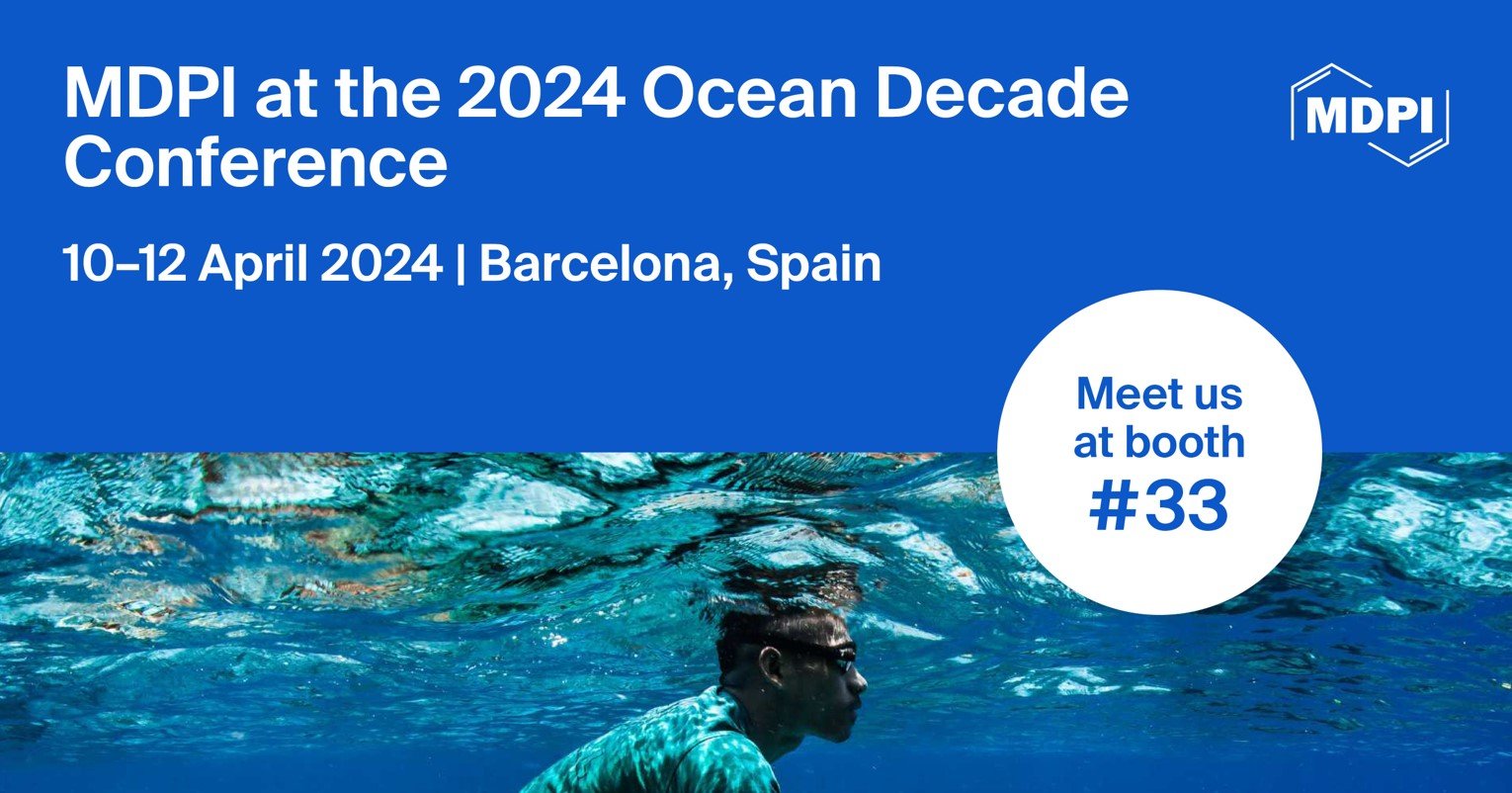Journal Description
Journal of Marine Science and Engineering
Journal of Marine Science and Engineering
is an international, peer-reviewed, open access journal on marine science and engineering, published monthly online by MDPI. The Australia New Zealand Marine Biotechnology Society (ANZMBS) is affiliated with JMSE and their members receive discounts on the article processing charges.
- Open Access— free for readers, with article processing charges (APC) paid by authors or their institutions.
- High Visibility: indexed with Scopus, SCIE (Web of Science), GeoRef, Inspec, AGRIS, and other databases.
- Journal Rank: JCR - Q1 (Engineering, Marine) / CiteScore - Q2 (Ocean Engineering)
- Rapid Publication: manuscripts are peer-reviewed and a first decision is provided to authors approximately 15.4 days after submission; acceptance to publication is undertaken in 2.7 days (median values for papers published in this journal in the second half of 2023).
- Recognition of Reviewers: reviewers who provide timely, thorough peer-review reports receive vouchers entitling them to a discount on the APC of their next publication in any MDPI journal, in appreciation of the work done.
Impact Factor:
2.9 (2022);
5-Year Impact Factor:
2.9 (2022)
Latest Articles
Latent Heat Flux Trend and Its Seasonal Dependence over the East China Sea Kuroshio Region
J. Mar. Sci. Eng. 2024, 12(5), 722; https://doi.org/10.3390/jmse12050722 - 26 Apr 2024
Abstract
Investigating latent heat flux (LHF) variations in the western boundary current region is crucial for understanding air–sea interactions. In this study, we examine the LHF trend in the East China Sea Kuroshio Region (ECSKR) from 1959 to 2021 using atmospheric and oceanic reanalysis
[...] Read more.
Investigating latent heat flux (LHF) variations in the western boundary current region is crucial for understanding air–sea interactions. In this study, we examine the LHF trend in the East China Sea Kuroshio Region (ECSKR) from 1959 to 2021 using atmospheric and oceanic reanalysis datasets and find that the LHF has a significant strengthening trend. This strengthening can be attributed to sea surface warming resulting from the advection of sea surface temperatures. More importantly, the LHF trend has an apparent seasonal dependence: the most substantial increasing trend in LHF is observed in spring, while the trends are weak in other seasons. Further analysis illustrates that the anomaly of air–sea humidity difference plays a pivotal role in controlling the seasonal variations in LHF trends. Specifically, as a result of the different responses of the East Asian Trough to global warming across different seasons, during spring, the East Asian Trough significantly deepens, resulting in northerly winds that facilitate the intrusion of dry and cold air into the ECSKR region. This intensifies the humidity difference between the sea and air, promoting the release of oceanic latent heat. These findings can contribute to a better understanding of the surface heat budget balance within western boundary currents.
Full article
(This article belongs to the Special Issue Air-Sea Interaction and Marine Dynamics)
Open AccessArticle
Spacing Ratio Effects on the Evolution of the Flow Structure of Two Tandem Circular Cylinders in Proximity to a Wall
by
Xiang Qiu, Xuezhi Ji, Jiankang Zhou, Jiahua Li, Yizhou Tao and Yulu Liu
J. Mar. Sci. Eng. 2024, 12(5), 721; https://doi.org/10.3390/jmse12050721 - 26 Apr 2024
Abstract
The flow around two tandem circular cylinders in proximity to a wall is investigated using particle image velocimetry (PIV) for Re = 2 × 103. The spacing ratios L/D are 1, 2, and 5, and the gap ratios G
[...] Read more.
The flow around two tandem circular cylinders in proximity to a wall is investigated using particle image velocimetry (PIV) for Re = 2 × 103. The spacing ratios L/D are 1, 2, and 5, and the gap ratios G/D are 0.3, 0.6, and 1. The proper orthogonal decomposition (POD) method and λci vortex identification method are used to investigate the evolution of flow structure, and the influences of L/D and G/D on flow physics are shown. At L/D = 2 and G/D = 0.3, a “pairing” process occurs between the wall shear layer and the upstream cylinder’s lower shear layer, resulting in a small separation bubble behind the upstream cylinder. At L/D = 1, the Strouhal number (St) increases with decreasing G/D. At three gap ratios, the St gradually decreases as L/D increases. At G/D = 0.3, there is nearly a 49.98% decrease from St = 0.3295 at L/D = 1 to St = 0.1648 at L/D = 5, which is larger than the reductions in cases of G/D = 0.6 and G/D = 1. The effects of L/D on the evolution of flow structure at G/D = 0.6 are revealed in detail. At L/D = 1, the vortex shedding resembles that of the single cylinder. As L/D increases to 2, a squarish flow structure is formed between two cylinders, and a small secondary vortex is formed due to induction of the lower shear layer of the upstream cylinder. At L/D = 5, there is a vortex merging process between the upper wake vortices of the upstream and downstream cylinders, and the lower wake vortex of the upstream cylinder directly impinges the downstream cylinder. In addition, the shear layers and wake vortices of the upstream cylinder interact with the wake of the downstream cylinder as L/D increases, resulting in reductions in velocity fluctuations, and the production and turbulent diffusion of turbulent kinetic energy are decreased behind the downstream cylinder.
Full article
(This article belongs to the Section Ocean Engineering)
►▼
Show Figures
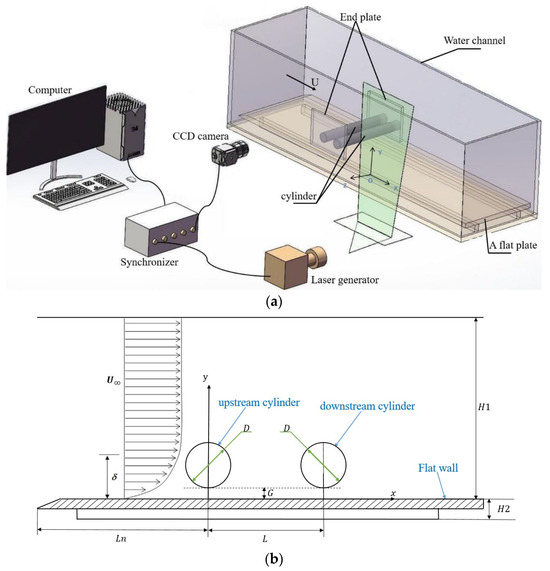
Figure 1
Open AccessArticle
Local Path Planning Method for Unmanned Ship Based on Encounter Situation Inference and COLREGS Constraints
by
Gang Wang, Jingheng Wang, Xiaoyuan Wang, Quanzheng Wang, Longfei Chen, Junyan Han, Bin Wang and Kai Feng
J. Mar. Sci. Eng. 2024, 12(5), 720; https://doi.org/10.3390/jmse12050720 - 26 Apr 2024
Abstract
Local path planning, as an essential technology to ensure intelligent ships’ safe navigation, has attracted the attention of many scholars worldwide. In most existing studies, the impact of COLREGS has received limited consideration, and there is insufficient exploration of the method in complex
[...] Read more.
Local path planning, as an essential technology to ensure intelligent ships’ safe navigation, has attracted the attention of many scholars worldwide. In most existing studies, the impact of COLREGS has received limited consideration, and there is insufficient exploration of the method in complex waters with multiple interfering ships and static obstacles. Therefore, in this paper, a generation method for a time–space overlapping equivalent static obstacle line for ships in multi-ship encounter scenarios where both dynamic and static obstacles coexist is proposed. By dynamically inferring ships’ encounter situations and considering the requirements of COLREGS, the influence of interfering ships and static obstacles on the navigation of the target ship at different times in the near future is represented as static obstacle lines. These lines are then incorporated into the scene that the target ship encountered at the path planning moment. Subsequently, the existing path planning methods were extensively utilized to obtain the local path. Compared with many common path planning methods in random scenarios, the effectiveness and reliability of the method proposed are verified. It has been demonstrated by experimental results that the proposed method can offer a theoretical basis and technical support for the autonomous navigation of unmanned ships.
Full article
(This article belongs to the Section Ocean Engineering)
►▼
Show Figures
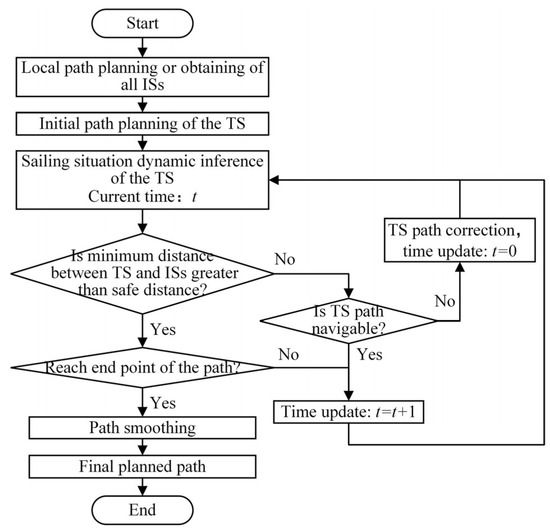
Figure 1
Open AccessArticle
Study on the Flame Transition Characteristics of a Gas Turbine Combustor
by
Mingmin Chen, Li Wang, Xinbo Huang, Minwei Zhao, Lingwei Zeng, Hongtao Zheng and Fuquan Deng
J. Mar. Sci. Eng. 2024, 12(5), 719; https://doi.org/10.3390/jmse12050719 - 26 Apr 2024
Abstract
Gas turbines are widely used as important equipment for electricity generation on islands and offshore platforms. During the operation of a gas turbine, the flame shape in the combustion chamber undergoes variations in response to changes in parameters such as gas turbine load,
[...] Read more.
Gas turbines are widely used as important equipment for electricity generation on islands and offshore platforms. During the operation of a gas turbine, the flame shape in the combustion chamber undergoes variations in response to changes in parameters such as gas turbine load, fuel distribution, and burner structure. These alterations in flame shape exert influence on combustion instability, emissions, and load characteristics. This study explores the variations in flame transition, emissions, and operating parameters among three distinct center stage structures: namely, the non-premix center stage (NPCS), premix center stage (PCS), and enhanced premix center stage (PCSE). The investigation is conducted using a heavy-duty gas turbine hybrid burner on a full temperature, full pressure, and full-size single burner experimental bench. Simultaneously, a multi-parameter numerical simulation regarding the influence of the central fuel split on flame shape analysis was conducted using the PCS burner under the design point for a more in-depth understanding of the mechanisms and for influencing factors associated with flame transition. The findings indicate that variations in flame transition loads among different central stage structures: for the NPCS burner, the transition occurs between 45% and 50% load; for the PCS burners, it takes place between 60% and 65% load; for the PCSE burners, it shifts between 55% and 60% load. Additionally, a reduction in NOx emissions is observed during the flame transition process. Furthermore, it was found that decreasing the central stage fuel results in a decline in flame angle for the same burner structure. As the central stage fuel diminishes to a specific value, the flame shape undergoes a sudden change. Further reduction in central stage fuel does not significantly affect the flame shape and temperature distribution.
Full article
(This article belongs to the Topic Marine Renewable Energy, 2nd Volume)
►▼
Show Figures
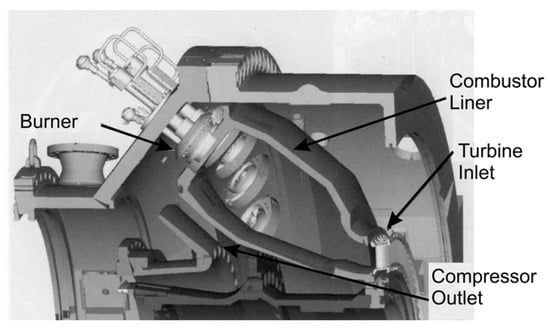
Figure 1
Open AccessArticle
The High-Resolution Interannual Evolution of the Dune Toe at a Mesotidal Barrier (Camposoto Beach, SW Spain)
by
Cristina Montes, Javier Benavente, María Puig, Juan Montes, Lara Talavera and Theocharis A. Plomaritis
J. Mar. Sci. Eng. 2024, 12(5), 718; https://doi.org/10.3390/jmse12050718 - 26 Apr 2024
Abstract
Over recent years, processes related to marine storms, sediment shortages and human intervention have caused the global retreat of many coastal systems and the degradation of their dunes. In this context, changes in the dune toe are commonly used as a proxy to
[...] Read more.
Over recent years, processes related to marine storms, sediment shortages and human intervention have caused the global retreat of many coastal systems and the degradation of their dunes. In this context, changes in the dune toe are commonly used as a proxy to study the interannual shoreline evolution, and it is usually analyzed using orthophotography, while high temporal- and spatial-scale resolution studies of dune toe evolution are not frequent. In this work, a quasi-monthly study of dune toe data was carried out between 2008 and 2018. These data, taken from the RTK-DGPS and UAS systems, were subjected to shoreline analysis, and they showed an average regression rate of −2.30 m/year, a higher value than the one registered until 2008 (1 m/year). This suggests an acceleration in the erosion suffered within the system, which was revealed to be more intense in the northern sector of the study area. Dune toe variability increased over the years, probably due to the presence of washover fans breaking the foredune that were reactivated and expanded during storm events. The ephemeral progradation of the dune toe was also noted, which could be explained with reference to wind events and/or beach nourishment that had been carried out over the studied period. From the analysis of the dune toe elevation, a decrease in this variable was obtained, especially in the areas affected due to washover fans. This finding is supported by the significant correlation of the dune toe elevation and erosion trend, suggesting that the areas where the dune toe was lower are prone to suffering a greater retreat. This correlation provides insight into the future evolution of the barrier, suggesting a state of degradation and a transition to a lower-resilience state.
Full article
(This article belongs to the Special Issue Learning from Geomorphological Adaptation of Coasts at Different Time Scales)
►▼
Show Figures
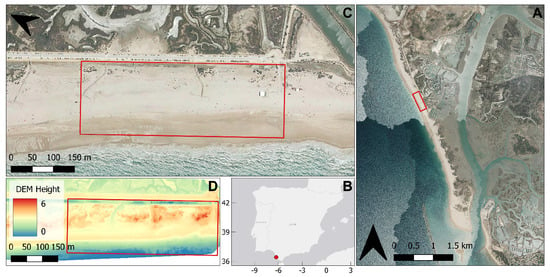
Figure 1
Open AccessArticle
Fuzzy Logic-Based Decision-Making Method for Ultra-Large Ship Berthing Using Pilotage Data
by
Yibo Li, Guobin Song, Tsz-Leung Yip and Gi-Tae Yeo
J. Mar. Sci. Eng. 2024, 12(5), 717; https://doi.org/10.3390/jmse12050717 - 26 Apr 2024
Abstract
►▼
Show Figures
As seafarers are involved in Maritime Autonomous Surface Ships (MASS), except for those in the fourth level of autonomy, the decision making of autonomous berthing should be carried out and be understood by human beings. This paper proposes a fuzzy logic-based human-like decision-making
[...] Read more.
As seafarers are involved in Maritime Autonomous Surface Ships (MASS), except for those in the fourth level of autonomy, the decision making of autonomous berthing should be carried out and be understood by human beings. This paper proposes a fuzzy logic-based human-like decision-making method for ultra-large ship berthing, which considers locations, ship particulars and the natural environment, and these factors are treated as the input variables. The IF–THEN rules are then established after the fuzzification of the input variables and are used for fuzzy inference to derive the decision of ship handling. It can be implemented in the decision-making system for safe navigation or be included in the process of autonomous berthing. The pilotage data are collected with nautical instruments and a distance measurement system during the berthing process, which are used to validate the proposed model and calculate the speed and turn errors. The overall and individual error of the decision-making model is in a reasonable and small range, which indicates that the model has good accuracy. The results of this research offer theoretical and practical insights into the development of a human-like decision-making method for autonomous navigation in port waters and maritime safety management in the shipping industry. The model can be further applied to develop a more widely applicable decision-making system for autonomous navigation in confined waters.
Full article
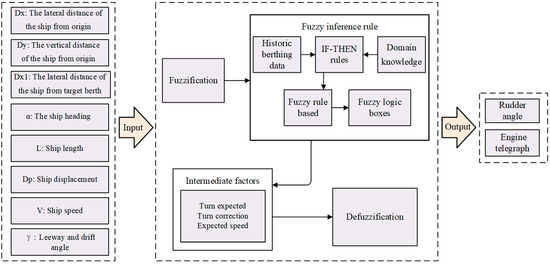
Figure 1
Open AccessArticle
An Underwater Localization Method Based on Visual SLAM for the Near-Bottom Environment
by
Zonglin Liu, Meng Wang, Hanwen Hu, Tong Ge and Rui Miao
J. Mar. Sci. Eng. 2024, 12(5), 716; https://doi.org/10.3390/jmse12050716 - 26 Apr 2024
Abstract
The feature matching of the near-bottom visual SLAM is influenced by underwater raised sediments, resulting in tracking loss. In this paper, the novel visual SLAM system is proposed in the underwater raised sediments environment. The underwater images are firstly classified based on the
[...] Read more.
The feature matching of the near-bottom visual SLAM is influenced by underwater raised sediments, resulting in tracking loss. In this paper, the novel visual SLAM system is proposed in the underwater raised sediments environment. The underwater images are firstly classified based on the color recognition method by adding the weights of pixel location to reduce the interference of similar colors on the seabed. The improved adaptive median filter method is proposed to filter the classified images by using the mean value of the filter window border as the discriminant condition to retain the original features of the image. The filtered images are finally processed by the tracking module to obtain the trajectory of underwater vehicles and the seafloor maps. The datasets of seamount areas captured in the western Pacific Ocean are processed by the improved visual SLAM system. The keyframes, mapping points, and feature point matching pairs extracted from the improved visual SLAM system are improved by 5.2%, 11.2%, and 4.5% compared with that of the ORB-SLAM3 system, respectively. The improved visual SLAM system has the advantage of robustness to dynamic disturbances, which is of practical application in underwater vehicles operated in near-bottom areas such as seamounts and nodules.
Full article
(This article belongs to the Topic Applications and Development of Underwater Robotics and Underwater Vision Technology)
►▼
Show Figures

Figure 1
Open AccessReview
How to Achieve Comprehensive Carbon Emission Reduction in Ports? A Systematic Review
by
Liping Zhang, Qingcheng Zeng and Liang Wang
J. Mar. Sci. Eng. 2024, 12(5), 715; https://doi.org/10.3390/jmse12050715 - 26 Apr 2024
Abstract
Under the mounting pressure to make changes to become more environmentally friendly and sustainable, port authorities have been exploring effective solutions to reduce CO2 emissions. In this regard, alternative fuels, innovative technology, and optimization strategies are key pathways for ports to transition
[...] Read more.
Under the mounting pressure to make changes to become more environmentally friendly and sustainable, port authorities have been exploring effective solutions to reduce CO2 emissions. In this regard, alternative fuels, innovative technology, and optimization strategies are key pathways for ports to transition toward a low-carbon pattern. In this review work, the current development status and characteristics of renewable and clean energy in ports were meticulously analyzed. The CO2 emission reduction effects and limitations of port microgrids, carbon capture, and other technological operations were thoroughly examined. Lastly, the emission reduction optimization strategies ports could adopt under different scenarios were evaluated. The research findings showed that (1) combining the characteristics of the port and quantifying the properties of different renewable energy sources and low-carbon fuels is extremely necessary to select suitable alternative energy sources for port development; (2) technological advancements, multi-party interests, and policy impacts were the primary factors influencing the development of emission reduction technology methods; and (3) the coordinated optimization of multiple objectives in cross-scenarios was the main direction for ports to achieve sustainable development. This study provides theoretical guidance to ports that are transitioning to a greener pattern, as well as pointing out future research directions and development spaces for researchers.
Full article
(This article belongs to the Section Marine Environmental Science)
►▼
Show Figures
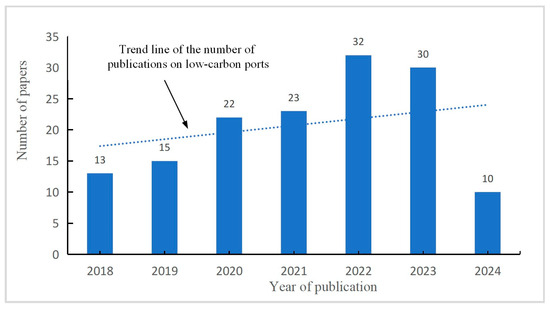
Figure 1
Open AccessArticle
Long-Term Evolution of Significant Wave Height in the Eastern Tropical Atlantic between 1940 and 2022 Using the ERA5 Dataset
by
Olorunfemi Omonigbehin, Emmanuel OlaOluwa Eresanya, Aifeng Tao, Victor Edem Setordjie, Samuel Daramola and Abiola Adebiyi
J. Mar. Sci. Eng. 2024, 12(5), 714; https://doi.org/10.3390/jmse12050714 - 26 Apr 2024
Abstract
Studies on the variability in ocean wave climate provide engineers and policy makers with information to plan, develop, and control coastal and offshore activities. Ocean waves bear climatic imprints through which the global climate system can be better understood. Using the recently updated
[...] Read more.
Studies on the variability in ocean wave climate provide engineers and policy makers with information to plan, develop, and control coastal and offshore activities. Ocean waves bear climatic imprints through which the global climate system can be better understood. Using the recently updated ERA5 dataset, this study evaluated the spatiotemporal distribution and variability in significant wave height (SWH) in the Eastern Tropical Atlantic (ETA). The short-term trends and rates of change were obtained using the Mann–Kendall trend test and the Theil–Sen slope estimator, respectively, and decadal trends were assessed using wavelet transformation. Significant, positive monthly and yearly trends and a prevailing decadal trend were observed across the domain. Observed trends suggest that stronger waves are getting closer to the coast and are modulated by the Southern and Northern Atlantic mid-latitude storm fields. These observations have implications for the increasing coastal erosion rates on the eastern coast of the Tropical Atlantic.
Full article
(This article belongs to the Section Physical Oceanography)
►▼
Show Figures
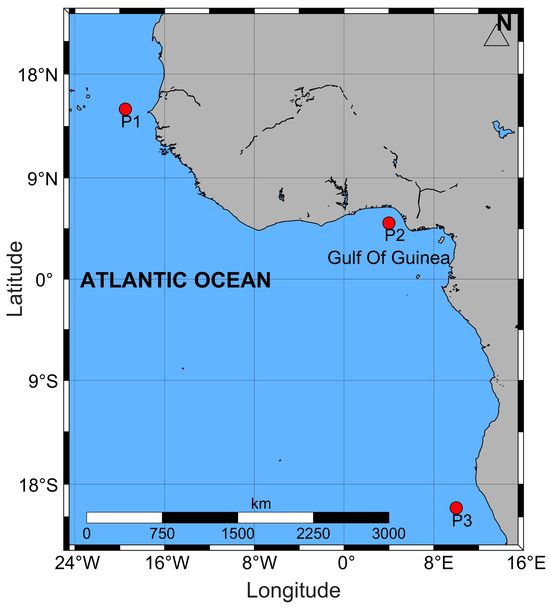
Figure 1
Open AccessArticle
Rare Earth Elements in Shells of Black Sea Molluscs: Anomalies and Biogeochemical Implications
by
Sergey V. Kapranov, Vitaliy I. Ryabushko, Juliya D. Dikareva, Larisa L. Kapranova, Nikolay I. Bobko and Sophia Barinova
J. Mar. Sci. Eng. 2024, 12(5), 713; https://doi.org/10.3390/jmse12050713 - 25 Apr 2024
Abstract
Rare earth elements (REE) are a class of increasingly used high-tech product components and new emerging environmental pollutants, which are accumulated, in particular, in marine biota. In this study, REE contents were estimated in shells of several molluscs common in the Black Sea.
[...] Read more.
Rare earth elements (REE) are a class of increasingly used high-tech product components and new emerging environmental pollutants, which are accumulated, in particular, in marine biota. In this study, REE contents were estimated in shells of several molluscs common in the Black Sea. The summed REE contents in mollusc shells decreased in the following order of species: Magallana gigas = Anadara kagoshimensis > Flexopecten glaber ponticus ≥ Rapana venosa > Mytilus galloprovincialis, ranging from 0.46 to 1.9 mg·kg−1. Canonical analysis of principal coordinates allowed for the correct identification of species based on the REE composition in no fewer than 67% of the samples. The mollusc shells were anomalously enriched in Sc, Y, La, Eu and Tb, most likely due to anthropogenic contamination. The Y/Ho ratios in all samples were represented by two fit values: 23.2 (chondritic) and 67.6 (superchondritic, mainly associated with A. kagoshimensis). A new universal relationship linking the contents of three light and heavy REE in Black Sea mollusc shells was proposed: Ce0.3 Er0.7⁄Yb = 2.00 ± 0.46 (mean ± standard deviation).
Full article
Open AccessArticle
Slamming Characteristics Due to the Special Shape of New Sandglass-Type Model in Waves by Comparing with Cylindrical Model
by
Wenhua Wang, Taiwei Piao, Chong Geng, Kedong Zhang, Zhongyu Wang and Yi Huang
J. Mar. Sci. Eng. 2024, 12(5), 712; https://doi.org/10.3390/jmse12050712 - 25 Apr 2024
Abstract
For the new sandglass-type FPSO, the unique shape of its floating body with oblique side and external expansion can significantly improve the motion performance, but meanwhile may result in specific slamming characteristics in waves. On this basis, this paper establishes a CFD method
[...] Read more.
For the new sandglass-type FPSO, the unique shape of its floating body with oblique side and external expansion can significantly improve the motion performance, but meanwhile may result in specific slamming characteristics in waves. On this basis, this paper establishes a CFD method including numerical wave-tank technique based on the Open FOAM platform. Therein, the velocity-inlet boundary method and the active absorption method are applied for numerical wave-making and wave-absorption. Compared with experimental results, the numerical method can be validated to be accurate enough to simulate wave slamming on floating ocean platforms. Then, the specific slamming phenomena on the sandglass-type floating body under a classic long wave can be investigated by comparing with the cylindrical model, including nonlinear wave rollover and breaking, water cushion, rooster-tail wave, side wave, water tongue, and so on. The mechanism of these phenomena and their effects on slamming pressure are studied. The essences of typical peaks in the time-history curve of the slamming pressure are mainly discussed. More interestingly, the main peak can be found to be related to the small peak due the amount of the broken water and the thickness of the water cushion. Finally, the slamming characteristics of the sandglass-type model in a classic short-wave condition are comparatively discussed.
Full article
Open AccessArticle
Multivariate USV Motion Prediction Method Based on a Temporal Attention Weighted TCN-Bi-LSTM Model
by
Yuchao Wang, Zixiang Tian and Huixuan Fu
J. Mar. Sci. Eng. 2024, 12(5), 711; https://doi.org/10.3390/jmse12050711 - 25 Apr 2024
Abstract
Unmanned surface vehicle (USV)’s motion is represented by time-series data that exhibit highly nonlinear and non-stationary features, significantly influenced by environmental factors, such as wind speed and waves, when sailing on the sea. The accurate prediction of USV motion, particularly crucial parameters, such
[...] Read more.
Unmanned surface vehicle (USV)’s motion is represented by time-series data that exhibit highly nonlinear and non-stationary features, significantly influenced by environmental factors, such as wind speed and waves, when sailing on the sea. The accurate prediction of USV motion, particularly crucial parameters, such as the roll angle and pitch angle, is imperative for ensuring safe navigation. However, traditional and single prediction models often struggle with low accuracy and fail to capture the intricate spatial–temporal dependencies among multiple input variables. To address these limitations, this paper proposes a prediction approach integrating temporal convolutional network (TCN) and bi-directional long short-term memory network (Bi-LSTM) models, augmented with a temporal pattern attention (TPA) mechanism, termed the TCN-Bi-LSTM-TPA (TBT) USV motion predictor. This hybrid model effectively combines the strengths of TCN and Bi-LSTM architectures to extract long-term temporal features and bi-directional dependencies. The introduction of the TPA mechanism enhances the model’s capability to extract spatial information, crucial for understanding the intricate interplay of various motion data. By integrating the features extracted by TCN with the output of the attention mechanism, the model incorporates additional contextual information, thereby improving prediction accuracy. To evaluate the performance of the proposed model, we conducted experiments using real USV motion data and calculated four evaluation metrics: mean square error (MSE), mean absolute error (MAE), mean absolute percentage error (MAPE), and R-squared (R2). The results demonstrate the superior accuracy of the TCN-Bi-LSTM-TPA hybrid model in predicting USV roll angle and pitch angle, validating its effectiveness in addressing the challenges of multivariate USV motion prediction.
Full article
(This article belongs to the Section Ocean Engineering)
Open AccessArticle
An Adaptive Large Neighborhood Search Algorithm for Equipment Scheduling in the Railway Yard of an Automated Container Terminal
by
Hongbin Chen and Wei Liu
J. Mar. Sci. Eng. 2024, 12(5), 710; https://doi.org/10.3390/jmse12050710 - 25 Apr 2024
Abstract
In container sea–rail combined transport, the railway yard in an automated container terminal (RYACT) is the link in the whole logistics transportation process, and its operation and scheduling efficiency directly affect the efficiency of logistics. To improve the equipment scheduling efficiency of an
[...] Read more.
In container sea–rail combined transport, the railway yard in an automated container terminal (RYACT) is the link in the whole logistics transportation process, and its operation and scheduling efficiency directly affect the efficiency of logistics. To improve the equipment scheduling efficiency of an RYACT, this study examines the “RYACT–train” cooperative optimization problem in the mode of “unloading before loading” for train containers. A mixed-integer programming model with the objective of minimizing the maximum completion time of automated rail-mounted gantry crane (ARMG) tasks is established. An adaptive large neighborhood search (ALNS) algorithm and random search algorithm (RSA) are designed to solve the abovementioned problem, and the feasibility of the model and algorithm is verified by experiments. At the same time, the target value and calculation time of the model and algorithms are compared. The experimental results show that the model and the proposed algorithms are feasible and can effectively solve the “RYACT–train” cooperative optimization problem. The model only obtains the optimal solution of the “RYACT–train” cooperative scheduling problem with no more than 50 tasks within a limited time, and the ALNS algorithm can solve examples of various scales within a reasonable amount of time. The target value of the ALNS solution is smaller than that of the RSA solution.
Full article
(This article belongs to the Section Ocean Engineering)
►▼
Show Figures

Figure 1
Open AccessArticle
Artificial Neural Networks for Mapping Coastal Lagoon of Chilika Lake, India, Using Earth Observation Data
by
Polina Lemenkova
J. Mar. Sci. Eng. 2024, 12(5), 709; https://doi.org/10.3390/jmse12050709 - 25 Apr 2024
Abstract
This study presents the environmental mapping of the Chilika Lake coastal lagoon, India, using satellite images Landsat 8-9 OLI/TIRS processed using machine learning (ML) methods. The largest brackish water coastal lagoon in Asia, Chilika Lake, is a wetland of international importance included in
[...] Read more.
This study presents the environmental mapping of the Chilika Lake coastal lagoon, India, using satellite images Landsat 8-9 OLI/TIRS processed using machine learning (ML) methods. The largest brackish water coastal lagoon in Asia, Chilika Lake, is a wetland of international importance included in the Ramsar site due to its rich biodiversity, productivity, and precious habitat for migrating birds and rare species. The vulnerable ecosystems of the Chilika Lagoon are subject to climate effects (monsoon effects) and anthropogenic activities (overexploitation through fishing and pollution by microplastics). Such environmental pressure results in the eutrophication of the lake, coastal erosion, fluctuations in size, and changes in land cover types in the surrounding landscapes. The habitat monitoring of the coastal lagoons is complex and difficult to implement with conventional Geographic Information System (GIS) methods. In particular, landscape variability, patch fragmentation, and landscape dynamics play a crucial role in environmental dynamics along the eastern coasts of the Bay of Bengal, which is strongly affected by the Indian monsoon system, which controls the precipitation pattern and ecosystem structure. To improve methods of environmental monitoring of coastal areas, this study employs the methods of ML and Artificial Neural Networks (ANNs), which present a powerful tool for computer vision, image classification, and analysis of Earth Observation (EO) data. Multispectral satellite data were processed by several ML image classification methods, including Random Forest (RF), Support Vector Machine (SVM), and the ANN-based MultiLayer Perceptron (MLP) Classifier. The results are compared and discussed. The ANN-based approach outperformed the other methods in terms of accuracy and precision of mapping. Ten land cover classes around the Chilika coastal lagoon were identified via spatio-temporal variations in land cover types from 2019 until 2024. This study provides ML-based maps implemented using Geographic Resources Analysis Support System (GRASS) GIS image analysis software and aims to support ML-based mapping approach of environmental processes over the Chilika Lake coastal lagoon, India.
Full article
(This article belongs to the Special Issue Remote Sensing Applications in Marine Environmental Monitoring)
►▼
Show Figures

Figure 1
Open AccessArticle
An Underwater Localization Algorithm for Airborne Moving Sound Sources Using Doppler Warping Transform
by
Junjie Mao, Zhaohui Peng, Bo Zhang, Tongchen Wang, Zhaokai Zhai, Chuanxing Hu and Qianyu Wang
J. Mar. Sci. Eng. 2024, 12(5), 708; https://doi.org/10.3390/jmse12050708 - 25 Apr 2024
Abstract
When an airborne sound source is in rapid motion, the acoustic signal detected by the underwater sensor experiences a substantial Doppler shift. This shift is intricately linked to the motion parameters of the sound source. Analyzing the Doppler shift characteristics of received acoustic
[...] Read more.
When an airborne sound source is in rapid motion, the acoustic signal detected by the underwater sensor experiences a substantial Doppler shift. This shift is intricately linked to the motion parameters of the sound source. Analyzing the Doppler shift characteristics of received acoustic signals enables not only the estimation of target motion parameters but also the localization of the airborne sound source. Currently, the predominant methods for estimating parameters of uniformly moving targets are grounded in classical approaches. In this study, the application of the Doppler warping transform, traditionally applicable to sound sources in uniform linear motion, is extended to encompass a broader spectrum of sound source trajectories. Theoretical and experimental data validate the efficacy of this transform in linearizing the Doppler shift induced by a source in curved motion. Building upon this foundation, a methodology is proposed for locating airborne acoustic sources in curved motion from underwater. Sea experimental data corroborate the method’s effectiveness in achieving underwater localization of a helicopter target during curved motion.
Full article
(This article belongs to the Section Ocean Engineering)
►▼
Show Figures

Figure 1
Open AccessArticle
The Coastal Scenery of São Miguel Island, Azores Archipelago: Implications for Coastal Management
by
Claudia Tendero-Peiró, Francisco Asensio-Montesinos, Giorgio Anfuso and Hugo Corbí
J. Mar. Sci. Eng. 2024, 12(5), 707; https://doi.org/10.3390/jmse12050707 - 25 Apr 2024
Abstract
In this study, coastal scenic beauty was assessed at 29 sites at São Miguel, which is one of the Azores Islands, i.e., a group of remote volcanic islands in the North Atlantic Ocean. The assessment was based on in situ observations and the
[...] Read more.
In this study, coastal scenic beauty was assessed at 29 sites at São Miguel, which is one of the Azores Islands, i.e., a group of remote volcanic islands in the North Atlantic Ocean. The assessment was based on in situ observations and the use of the Coastal Scenic Evaluation System (CSES), which consists of a checklist with 26 physical- and anthropic-weighted parameters and the Fuzzy Logic Approach (FLA) mathematical tool. The study sites were classified into five classes according to their typology and their scenic value, ranging from Class I (natural sites of great scenic beauty) to Class V (unattractive, urbanized sites). Concerning beach typology, 13% were remote, 28% rural, 28% village, and 31% urban. Concerning scenic beauty, 10% of the sites belonged to Class I, 14% to Class II, 17% to Class III, 31% to Class IV, and 28% to Class V. The physical parameters were linked to the characteristics of the geological volcanic landscapes, and the anthropic parameters essentially reflected the presence of tourism and public services. The results of the assessment provide a scientific basis for developing a management strategy for the preservation and conservation of the coastal areas and their sustainable development.
Full article
(This article belongs to the Section Geological Oceanography)
►▼
Show Figures

Figure 1
Open AccessArticle
Global Strong Winds Occurrence Characteristics and Climate Index Correlation
by
Di Wu, Kaishan Wang, Chongwei Zheng and Yuchen Guo
J. Mar. Sci. Eng. 2024, 12(5), 706; https://doi.org/10.3390/jmse12050706 - 25 Apr 2024
Abstract
Guided by entering the deep sea and achieving deep marine development in marine construction, the factors hindering marine construction cannot be ignored. Strong ocean winds have a devastating impact on tasks such as ship navigation, carrier aircraft take-off and landing, naval operations and
[...] Read more.
Guided by entering the deep sea and achieving deep marine development in marine construction, the factors hindering marine construction cannot be ignored. Strong ocean winds have a devastating impact on tasks such as ship navigation, carrier aircraft take-off and landing, naval operations and military exercises, and affect the planning of sea routes and the development of the long-distance sea. This paper uses ERA5 wind field data and key climate indices to conduct a systematic analysis of catastrophic winds in the global ocean using methods such as climate statistical analysis, the Theil–Sen trend method, Pearson correlation and contribution rate calculation. It points out the spatiotemporal distribution, variation trend, climate index correlation and contribution rate characteristics of strong winds occurrence (SWO) and hopes that the results of this study can serve as a guide for maritime route planning and provide technical assistance and decision-making support for marine development and other needs. The results show the following: The high global SWO occurs in the Southern Ocean, the North Atlantic, the North Pacific, near Taiwan, China, the Arabian Sea and other locations, with the strongest SWO in summer. The growth trend of SWO in the Southern Ocean is strongest, with decreasing regions near the Arabian Sea and the Bay of Bengal, and the growth trend is reflected in all four seasons. The climate indices with the strongest correlation and highest contribution to the global SWO are AAO (Antarctic Oscillation) and EP–NP (East Pacific–North Pacific pattern) with a correlation between −0.5 and 0.5 and a contribution rate of up to −50%~50%.
Full article
(This article belongs to the Section Physical Oceanography)
►▼
Show Figures
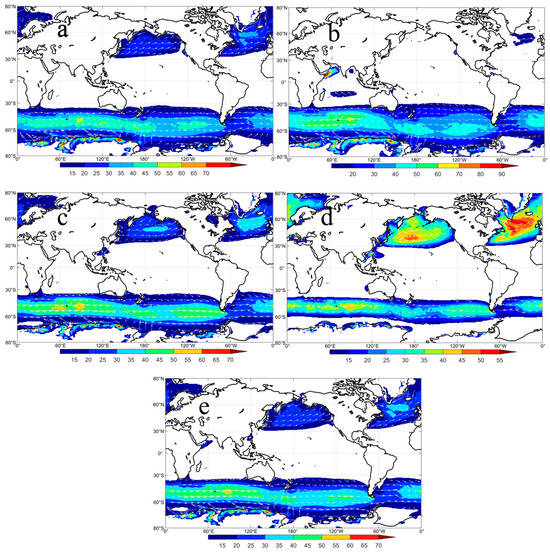
Figure 1
Open AccessFeature PaperArticle
Multi-Frequency Noise Reduction Method for Underwater Radiated Noise of Autonomous Underwater Vehicles
by
Beibei Mao, Hua Yang, Wenbo Li, Xiaoyu Zhu and Yuxuan Zheng
J. Mar. Sci. Eng. 2024, 12(5), 705; https://doi.org/10.3390/jmse12050705 - 25 Apr 2024
Abstract
The multi-frequency noisy vibration of an autonomous underwater vehicle (AUV) is a significant factor affecting the performance of shear probes mounted on the head of AUVs. Many efforts have been made to suppress mechanical radiation noise; however, conventional noise reduction methods have their
[...] Read more.
The multi-frequency noisy vibration of an autonomous underwater vehicle (AUV) is a significant factor affecting the performance of shear probes mounted on the head of AUVs. Many efforts have been made to suppress mechanical radiation noise; however, conventional noise reduction methods have their limitations, such as mode mixing. In order to extract thorough information from the aliasing modes and achieve multi-frequency mode targeted correction, a multi-frequency noise reduction method is proposed, based on secondary decomposition and the multi-mode coherence correction algorithm. Weak impulses in aliasing shear mode are enhanced, and mixing frequencies are isolated for thorough decomposition. Noisy mechanical vibrations in the shear modes are eliminated with the use of the acceleration modes along the identical central frequency series. The denoised modes are used to reconstruct the cleaned shear signal, and the updated spectra are aligned with the standard Nasmyth spectrum. Compared with the raw profiles, the variation in the dissipation rate estimated from the corrected shear is reduced by more than an order of magnitude.
Full article
(This article belongs to the Special Issue Marine Technology: Latest Advancements and Prospects)
►▼
Show Figures

Figure 1
Open AccessArticle
The Formation of 2D Holograms of a Noise Source and Bearing Estimation by a Vector Scalar Receiver in the High-Frequency Band
by
Sergey Pereselkov, Venedikt Kuz’kin, Matthias Ehrhardt, Yurii Matvienko, Sergey Tkachenko and Pavel Rybyanets
J. Mar. Sci. Eng. 2024, 12(5), 704; https://doi.org/10.3390/jmse12050704 - 25 Apr 2024
Abstract
The holographic signal-processing method for a single vector scalar receiver (VSR) in the high-frequency band in shallow water is developed in the paper. The aim of this paper is to present the results of the theoretical analysis, numerical modeling, and experimental verification of
[...] Read more.
The holographic signal-processing method for a single vector scalar receiver (VSR) in the high-frequency band in shallow water is developed in the paper. The aim of this paper is to present the results of the theoretical analysis, numerical modeling, and experimental verification of holographic signal processing for a noise source by the VSR. The developed method is based on the formation of the 2D interferogram and 2D hologram of a noise source in a shallow-water waveguide. The 2D interferograms and 2D holograms for different channels of the VSR (P sound pressure and
(This article belongs to the Special Issue Underwater Acoustics and Digital Signal Processing)
►▼
Show Figures
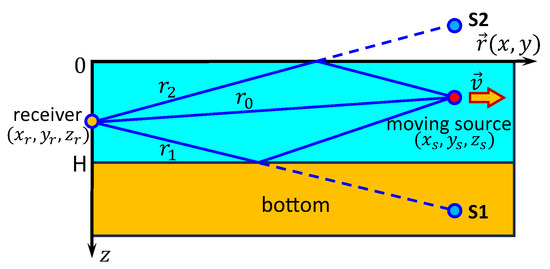
Figure 1
Open AccessArticle
Pore Pressure Prediction for High-Pressure Tight Sandstone in the Huizhou Sag, Pearl River Mouth Basin, China: A Machine Learning-Based Approach
by
Jin Feng, Qinghui Wang, Min Li, Xiaoyan Li, Kaijin Zhou, Xin Tian, Jiancheng Niu, Zhiling Yang, Qingyu Zhang and Mengdi Sun
J. Mar. Sci. Eng. 2024, 12(5), 703; https://doi.org/10.3390/jmse12050703 - 24 Apr 2024
Abstract
A growing number of large data sets have created challenges for the oil and gas industry in predicting reservoir parameters and assessing well productivity through efficient and cost-effective techniques. The design of drilling plans for a high-pressure tight-sand reservoir requires accurate estimations of
[...] Read more.
A growing number of large data sets have created challenges for the oil and gas industry in predicting reservoir parameters and assessing well productivity through efficient and cost-effective techniques. The design of drilling plans for a high-pressure tight-sand reservoir requires accurate estimations of pore pressure (Pp) and reservoir parameters. The objective of this study is to predict and compare the Pp of Huizhou Sag, Pearl River Mouth Basin, China, using conventional techniques and machine learning (ML) algorithms. We investigated the characteristics of low-permeability reservoirs by observing well-logging data sets and cores and examining thin sections under a microscope. In the reservoir zone, the average hydrocarbon saturation is 55%, and the average effective porosity is 11%. The tight sandstone reservoirs consist of fine- to extremely fine-grained argillaceous feldspathic sandstone. The mean absolute error for reservoir property prediction is 1.3%, 2.2%, and 4.8%, respectively, for effective porosity, shale volume, and water saturation. Moreover, the ML algorithm was employed to cross-check the validity of the prediction of Pp. Combining conventional and ML techniques with the core data demonstrates a correlation coefficient (R2) of 0.9587, indicating that ML techniques are the most effective in testing well data. This study shows that ML can effectively predict Pp at subsequent depths in adjacent geologically similar locations. Compared to conventional methods, a substantial data set and ML algorithms improve the precision of Pp predictions.
Full article
(This article belongs to the Special Issue Production Prediction in Onshore and Offshore Tight Reservoirs)

Journal Menu
► ▼ Journal Menu-
- JMSE Home
- Aims & Scope
- Editorial Board
- Reviewer Board
- Topical Advisory Panel
- Instructions for Authors
- Special Issues
- Topics
- Sections
- Article Processing Charge
- Indexing & Archiving
- Editor’s Choice Articles
- Most Cited & Viewed
- Journal Statistics
- Journal History
- Journal Awards
- Society Collaborations
- Editorial Office
Journal Browser
► ▼ Journal BrowserHighly Accessed Articles
Latest Books
E-Mail Alert
News
Topics
Topic in
Energies, JMSE, Oceans, Remote Sensing, Water
Energy from Sea Waves
Topic Editors: Daniele Milone, Vincenzo Franzitta, Domenico Curto, Andrea GuercioDeadline: 30 April 2024
Topic in
Energies, JMSE, Safety, Sensors, Processes
Safety, Reliability and Effectiveness of Internal Combustion Engines
Topic Editors: Leszek Chybowski, Jarosław Myśków, Przemysław Kowalak, Andrzej JakubowskiDeadline: 31 May 2024
Topic in
JMSE, Oceans, Remote Sensing, Sustainability, Water
Aquatic Environment Research for Sustainable Development
Topic Editors: Giacomo De Carolis, Gianfranco Fornaro, Sedat Gündoğdu, Giovanni Ludeno, Matteo Postacchini, Ali Rıza Kosker, Virginia ZamparelliDeadline: 31 July 2024
Topic in
Diversity, Ecologies, JMSE, Sustainability, Water
Marine Ecology, Environmental Stress and Management
Topic Editors: Michael Karydis, Maurizio AzzaroDeadline: 30 August 2024

Conferences
Special Issues
Special Issue in
JMSE
Revealing the Biodiversity of Hidden Marine Habitats
Guest Editor: Alen SoldoDeadline: 5 May 2024
Special Issue in
JMSE
Hydrodynamic Circulation Modelling in the Marine Environment
Guest Editors: Yannis Androulidakis, Christos MakrisDeadline: 25 May 2024
Special Issue in
JMSE
Wave Interactions with Coastal Structures II
Guest Editors: Vincent Gruwez, Tomohiro Suzuki, Corrado AltomareDeadline: 1 June 2024
Special Issue in
JMSE
Advanced Studies in Breakwaters and Coastal Protection
Guest Editors: Maria Teresa Reis, Tiago Fazeres Ferradosa, João Alfredo SantosDeadline: 20 June 2024




